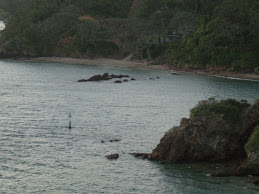I subscribe to Dr Mercola’s email letters. Not because I believe in what he says, but he keeps me entertained and intrigued. Here is one recent one that came challenging the safety of soy products. The questions in his marketing campaign were:
• Is soy really the reason people in Asian cultures live longer and have fewer cases of certain cancers? Discover the surprising truth…
• Do you know what types of soy are good for you -- and those types that aren’t? Does your diet contain harmful soy? Answers in this interview…
• How much soy is too much? Do you know how much soy you are actually consuming? Foods that contain “hidden” soy may be in your own kitchen – find out what they are…
• Why this supposed “health” food may be blocking your body’s ability to absorb much-needed minerals -- and blocking your ability to digest your food.
Worried
I am a bit worried. I eat tofu regularly simply because Princess of the House doesn’t like much meat. Hubby doesn’t care much for tofu but we force him to eat some. He prefers meat. So how much tofu should we be consuming?
Here is one source from a website called soyonline in NZ.
The key message I got from this web is: because of the way it is processed, soy is dangerous. Soy, it says, contains potent chemical toxins such as phytic acid, trypsin inhibitors, toxic lysinoalanine and highly carcinogenic nitrosamines.(My hubby always tells me toxins are found in nature, especially in food. So I am not go get too excited about this.)
This website says: “Phytoestrogens that disrupt endocrine function and are potent antithyroid agents are present in vast quantities in soy, including the potentially devastating isoflavone Genistein. Infants exclusively fed soy-based formula have 13,000 to 22,000 times more estrogen compounds in their blood than babies fed milk-based formula, the estrogenic equivalent of at least five birth control pills per day. Premature development of girls has been linked to the use of soy formula, as has the underdevelopment of males. Infant soy formula has been linked to autoimmune thyroid disease.”
WOW, that is scary if you have babies feeding on soy formula.
A little something of everything is ok
I think the problem is off-the-shelf foods contain too many soy-based ingredients. Soy is everywhere – in breads, biscuits, breakfast cereals, cake mixes, sausages, hotdogs, chicken nuggets, fish fingers, pastries, and lots more. Today I made some pancakes instead of using Edmond’s premade ones. I looked at the ingredients list on the Edmond’s package, and found 2 soy ingredients there.
Thousands of years ago, Asians found out how to make soy safe to eat by soaking, fermenting and sprouting the beans. This eliminated the anti-nutrients and increased soy's nutrition. Today, lots of these processes are bypassed. And soy has crept into quite a few things in our pantry. I checked out the little pack of biscuits I put in Princess of the House’s lunchbox – there is soy there. There is soy additive in our bread, in breadcrumbs we use, and so on.
I think I will henceforth:
Allow Princess of the House to only eat tofu sparingly. Where possible, eat fresh and “whole” food that I can cook at home. (This means forgo-ing the convenient packages of biscuits and chips.)
Where possible, make my own pastries and cakes.
Still have a drink of soy milk when I feel like it!
"...the secular meaning of Christmas"
22 hours ago




